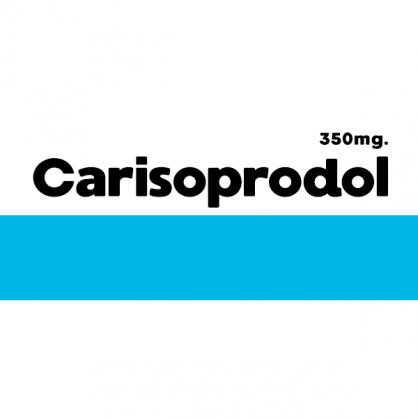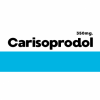CARISOPRODOL 350mg. Tablets.
$90.00 – $360.00
The Product it’s In Stock and Ready to Go Out, the Price Includes the Release of the Prescription, Duty-Free, Tax and all Fees, and We Also Send All Orders From a Safe Place, To Avoid Mail Lifters, Customs Hassle, and Shipping Issues, and We Always Use Special Courier Companies like FedEx and/or U.P.S. Via Two Days Air and/or Second Day Air, With No Signature Required, and We do Send Discrete Flat Envelope With no Medical or Pharmaceutical Tags, to Protect the Right of Privacy of Our Customers; We Also Have a Confidentiality Clause, and We Don’t Share Our Customers Information With Third Persons
This Product Belongs to the Opioid Narcotic Pain Medication Group, Classified by the F.D.A. On Schedule # II of Controlled Substances, for Exclusive use of Clinics & Hospitals; And We Offer These Top Quality Products From the Original Laboratories Approved by the F.D.A.
Description
Carisoprodol 350mg.
DESCRIPTION
Central-acting skeletal muscle relaxant
Used for pain relief from musculoskeletal conditions such as muscle spasm
Metabolized to small quantities of meprobamate (an anxiolytic agent)
COMMON BRAND NAMES
Soma, Vanadom
HOW SUPPLIED
Carisoprodol/Soma/Vanadom Oral Tab: 250mg, 350mg
DOSAGE & INDICATIONS
250 mg to 350 mg PO 3 times daily and at bedtime. To reduce abuse potential, the duration of therapy should not exceed 2 to 3 weeks; data supporting efficacy for prolonged periods are not available.
250 mg to 350 mg PO 3 times daily and at bedtime. To reduce abuse potential, the duration of therapy should not exceed 2 to 3 weeks; data supporting efficacy for prolonged periods are not available.
MAXIMUM DOSAGE
1400 mg/day PO (manufacturer dosage limits for Soma).
Not recommended.
>= 16 years: 1400 mg/day PO (manufacturer dosage limits for Soma).
< 16 years: Safety and efficacy have not been established.
Safety and efficacy have not been established.
DOSING CONSIDERATIONS
Dosage reduction may be necessary based on clinical response and degree of hepatic impairment; carisoprodol is primarily metabolized by the liver. Patients with reduced CYP2C19 activity (poor metabolizers) have a greater exposure to carisoprodol; use cautiously in these patients.
Dosage should be modified depending on clinical response and degree of renal impairment, but no quantitative recommendations are available. Metabolites, including meprobamate, are excreted renally.
Intermittent hemodialysis
Carisoprodol is removed by hemodialysis. However, no specific dosage recommendations are available.
Peritoneal dialysis
Carisoprodol is removed by peritoneal dialysis. However, no specific dosage recommendations are available.
ADMINISTRATION
NOTE: Carisoprodol is a controlled substance. To reduce abuse potential, limit duration of therapy to a maximum of 3 weeks. Health care providers are advised to assess the risk of abuse before prescribing, keep prescription records, monitor for signs of abuse/overdose, and educate patients and families about abuse potential and proper storage/disposal.
May be administered with or without food. To minimize gastric irritation, administer with food.
Administer the last daily dose at bedtime.
STORAGE
Soma:
– Store at controlled room temperature (between 68 and 77 degrees F)
Vanadom:
– Store at controlled room temperature (between 68 and 77 degrees F)
CONTRAINDICATIONS / PRECAUTIONS
Carisoprodol is contraindicated in acute intermittent porphyria because it can potentiate the disease.
Carisoprodol is contraindicated in patients with a known carbamate hypersensitivity because carisoprodol is metabolized to meprobamate.
Carisoprodol is metabolized in the liver and should be used with caution in patients with hepatic disease. Hepatic dysfunction can reduce the excretion rate and possibly lead to toxicity. Cautious carisoprodol use is advised for patients with reduced CYP2C19 activity. As compared with data from patients with normal CYP2C19 activity, patients who are poor CYP2C19 metabolizers have a 4-fold increased exposure to carisoprodol and a concomitant 50% reduced exposure to meprobamate. The prevalence of CYP2C19 poor metabolizers in Caucasian and African American patients is approximately 3—5% and in Asian patients is approximately 15—20%.
Carisoprodol is excreted in the urine and should be used with caution in patients with renal disease. Renal impairment or renal failure can reduce the excretion rate of metabolites such as meprobamate (minor active metabolite). Carisoprodol is removed by hemodialysis and peritoneal dialysis.
Carisoprodol should be used with caution in patients with CNS depression. Carisoprodol is a centrally acting agent and can exacerbate CNS depression. Carisoprodol may impair mental or physical abilities required for driving or operating machinery; carisoprodol-associated motor vehicle accidents have occurred in post-market experience. There may be an additive effect and an increase in CNS depression if carisoprodol is combined with ethanol or other CNS depressants. Use caution with simultaneous administration.
Carisoprodol should be used with caution in patients with a seizure disorder. Seizures have been reported rarely during post-marketing surveillance in temporal association with carisoprodol. Seizures occurred in patients with and without medical history of seizures and have been reported during therapeutic use, overdose, and during withdrawal from prolonged use.
Carisoprodol is a schedule IV controlled substance and should be used with caution in patients with a history of substance abuse or dependency. Psychological dependence, drug abuse, drug misuse, and criminal diversion have been reported with prolonged use of carisoprodol and with meprobamate, one of the metabolites of carisoprodol. To reduce abuse potential, limit the duration of therapy to a maximum of 3 weeks. Health care providers are also advised to assess the risk of abuse before prescribing, keep prescription records, monitor for signs of abuse/overdose, and educate patients and families about abuse potential and proper storage/disposal. Withdrawal reactions after abrupt discontinuation of carisoprodol have also occurred, but appear to be mild and less severe than benzodiazepine withdrawal. Symptoms of withdrawal may include insomnia, vomiting, abdominal cramps, headache, tremors, muscle twitching, ataxia, hallucinations, and psychosis. Avoid abrupt discontinuation of carisoprodol.
The efficacy, safety, and pharmacokinetic parameter values of carisoprodol in geriatric patients over 65 years of age have not been established. According to the Beers Criteria, skeletal muscle relaxants including carisoprodol are considered potentially inappropriate medications (PIMs) for use in geriatric patients and should be avoided because most muscle relaxants are poorly tolerated by older adults. Some muscle relaxants can cause anticholinergic effects, sedation, and are associated with an increased risk of fractures. In addition, there is questionable effectiveness of the dosages tolerated by older adults. The federal Omnibus Budget Reconciliation Act (OBRA) regulates the use of medications in residents of long-term care facilities. According to the OBRA guidelines, most muscle relaxants are poorly tolerated by older adults due to anticholinergic side effects, sedation, and/or weakness. However, periodic use (e.g., once every 3 months) for no more than 7 days may be appropriate when other interventions or alternative medications are not effective or indicated. Chronic use in individuals with complications due to multiple sclerosis, spinal cord injuries, cerebral palsy, and other select conditions may be indicated, although close monitoring is warranted. Abrupt discontinuation of some muscle relaxants may cause or predispose individuals to seizures or hallucinations.
Drug-associated risk of major birth defects, miscarriage, or other adverse maternal or fetal outcomes has not been found over many decades of carisoprodol use during pregnancy. Retrospective, postmarketing studies of meprobamate, the primary active metabolite of carisoprodol, during human pregnancy have not been consistent in demonstrating an increased risk of congenital malformations after exposure during the first trimester. In studies that have indicated an increased risk, the types of malformations have varied. Meprobamate crosses the placental barrier and is present in cord blood at or near maternal plasma concentrations. An increased risk of congenital malformations associated with the use of minor tranquilizers (e.g., meprobamate, chlordiazepoxide, and diazepam) during the first trimester of pregnancy has been suggested in several studies. Because use of these drugs is rarely a matter of urgency, their use during this period should almost always be avoided. Reduced fetal weights, postnatal weight gain, and postnatal survival occurred in pregnant mice exposed to carisoprodol from 7 days prior to gestation through weaning at doses of 2.6- and 4.1-times the maximum human recommended human dose (MRHD) of 1,400 mg/day based on body surface area comparison. One study found no adverse effects on mental or motor development or IQ scores for children exposed to meprobamate in utero.
Carisoprodol and its active metabolite, meprobamate, are present in breast milk. There are no data describing the effect of carisoprodol on milk production. There is a report of sedation in an infant who was breast-fed by a mother taking carisoprodol. Monitor infants exposed to carisoprodol through breast milk for sedation. Consider the developmental and health benefits of breast-feeding along with the mother’s clinical need for carisoprodol and any potential adverse effects on the breast-fed infant from carisoprodol or the underlying maternal condition.
Carisoprodol is not recommended for neonates, infants, children, or adolescents under the age of 16 years because safe and effective use has not been established in pediatric patients. No pediatric specific problems have been documented.
Additional information
| Tablets | 30 tablets, 90 tablets +30 Free Product, 120 tablets +60 Free Product |
|---|
Only logged in customers who have purchased this product may leave a review.



Reviews
There are no reviews yet.